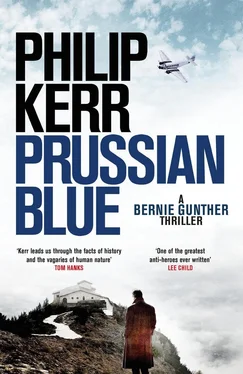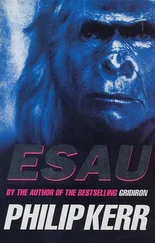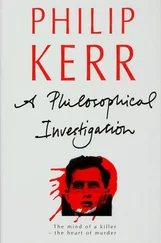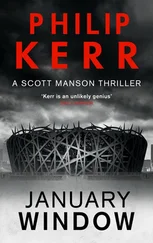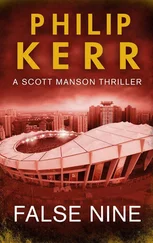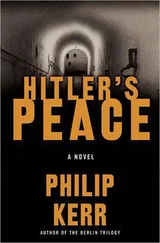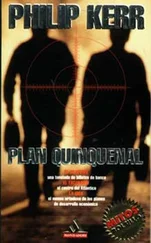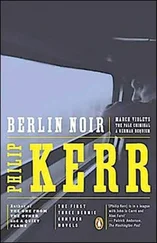“Absolutely. I know because he was looking at me. I wasn’t really part of their discussion. I was just sort of hanging around waiting for Huber or Dimroth — he’s the head engineer from Sager & Woerner — to tell me that they were finished breakfast. Or that they were ready to go to the Platterhof. But it could just as easily have been Flex who told me. And at the moment he fell I was looking right at him as if that’s what he was going to say.”
“So he’s taller than everyone else, right?”
“Yes.”
“And wearing a little green Tyrolean hat. Correct?”
“Correct.”
“And facing you, instead of down the valley.”
“That’s right.”
“And you’re standing where?”
Kannenberg crossed the terrace and stood in front of the winter garden’s window. “Here. Just here.”
“Thank you, Arthur. We’ll take it from here. You go to bed, like a good fellow, and I’ll see you later on today.”
“And if there’s time you can tell me about Berlin. I miss it sometimes.”
“Oh, and Arthur? See if you can find me a pair of gloves. My hands are freezing.”
I went back inside to fetch the camera from my office on the first floor where I’d left it, and then returned to the terrace where Kaspel was now smoking a cigarette. Seeing me he stubbed it out very carefully on the wall and then placed the butt in his coat pocket. I smiled and shook my head. If I hadn’t thought Hitler was crazy before coming to the Berghof, I did now. Where was the harm in a few lousy cigarettes? I took a short walk around the terrace and then came back to Kaspel.
“Hey, I just had a thought,” Kaspel said. “If he was facing up the mountain and the shot hit him in the back of the head, then—”
“Exactly.” I pointed into the darkness that lay beyond the terrace, to the north, toward Berchtesgaden at the bottom of the mountain. “The shooter was down there somewhere, Hermann. Not in the woods, or up there. No wonder you didn’t find anything. The shooter was never there.” I glanced around the terrace and saw a neat stack of wooden dowelling in the corner. I fetched a length and carried it to the edge of the terrace. “The question is, where exactly was he positioned? Where would a man with a rifle get the sort of cover he’d need to avoid discovery long enough to take a shot at this terrace?”
I handed Kaspel the wooden dowelling. “Flex was taller than me. About the size of that man there.” I pointed at one of the sleepy-looking SS men awaiting our orders, who was also the tallest. “You. You’re about the same height as Flex. Come here. Come on, Germany awake, right?”
The SS man moved smartly toward the wall.
“What’s your name, son?”
“Dornberger, sir. Walter Dornberger.”
“Walter, I want you to take off your helmet and turn to face away from the valley. And I want you to pretend to be the man who was shot. If you don’t mind, I want to borrow your head for a moment. Hermann? You hold the dowelling in position alongside his head, where I tell you.”
“Right you are,” said Kaspel.
I put my finger at the bottom of the SS man’s skull. “Entry wound about here. Exit wound about six to eight centimeters higher. Perhaps more. But it’s hard to be more accurate, given the skull damage. If we had the dead man’s hat, of course, we would have an actual bullet hole, which might enable us to plot the bullet’s trajectory.”
It was at this moment that Kannenberg returned carrying a hat with a four-cord rope band and a pin that was a fisherman’s fly. Made of green loden wool, and with a two-inch brim, the hat was heavily stained with blood. On the inside especially it looked as if someone had used it as a gravy boat. But it was quite dry and a small hole was clearly visible in the crown where the assassin’s rifle bullet had exited.
“This is the hat,” explained Kannenberg. “I found it on the floor by the incinerator.”
“Well done, Arthur. Now we’re getting somewhere.”
This time Kannenberg waited to see what I was about to do with the SS man and the dowelling and the gnome’s hat I was holding. I pushed the dowelling through the hole and then asked the SS man if he wouldn’t mind putting the hat on his head for a moment.
“Now, then,” I told Kaspel. “Lower the end of the dowelling a few centimeters to where we thought the bullet entered Flex’s skull. That’s it.”
Quickly I took some photographs and then inspected both ends of the dowelling — one pointing up at the wooden balcony immediately above the terrace and the other pointing over the edge of the wall and down the valley.
After a moment or two I removed the green hat from the SS man’s blond head and laid it on the ground.
“Arthur? I’m going to need you to show Walter here where you found the hat. Walter? I want you to go to the incinerator, get down on your hands and knees, and see if you can’t find a spent bullet. And Arthur? I’m going to need a ladder so that I can climb up and take a closer look at that balcony.”
“Right away, Bernie,” said Kannenberg.
“We’re going to see if we can find the spent bullet up there in the woodwork on that balcony,” I explained. “One single silver bullet.”
“Why silver?” asked Kaspel.
I didn’t answer but the truth was I couldn’t see the point of anyone shooting a rifle bullet at the terrace of Hitler’s private residence unless it was made of a melted-down silver crucifix.
April 1939
We didn’t find a single bullet lodged in the woodwork of the Berghof’s second-floor balcony because by the time it was light, we’d found four of them. Before gouging out these bullets with my Boker knife I marked each of their positions with a piece of Lohmann tape and then photographed them. I was beginning to wish I’d asked for a photographer as well as a Leica, but the truth was I was hoping to pocket the Leica when the case was over and sell it when I was back in Berlin. When you’re working for people who are mostly thieves and murderers, a little of it comes off on your hands now and then.
From the second-floor balcony at the Berghof it was clear exactly why Hitler had chosen this place to live in. The view from the house was breathtaking. It was impossible to look at this view of Berchtesgaden and the Untersberg behind it without hearing an alphorn or a simple cowbell, but not Wagner. At least not for me. Give me a cowbell any day to the high priest of Germanism. Besides, a cowbell only has one note, which is a lot easier on the backside than five hours in the Bayreuth Festival Hall. In truth I spent very little time admiring the postcard view from Hitler’s mountain; the sooner I was away from there and back to the combusted blue air of Berlin, the better. And so with Hermann Kaspel holding one end of the measuring tape at the top of the ladder, I retreated to the wall at the edge of the terrace and the place where Flex had been shot, and positioned the length of dowelling like a rifle along the same descending angle.
“Would you agree,” I asked Kaspel, “that the end of this piece of dowelling seems to be pointing toward those lights to the west of here?”
“Yes.”
“What is that building?”
“That is probably the Villa Bechstein. The place where your assistant is currently staying.”
“Yes, I’d forgotten about Korsch. I hope he slept better than me.” I glanced at my watch. It was almost seven o’clock. I’d been in Obersalzberg for seven hours but it felt like seven minutes. I suppose that was the methamphetamine. And of course I knew I was going to have to take some more, and soon. “Well, we’ll soon find out. Because that’s where we’re going just as soon as we’ve had breakfast in the Leader’s dining room. To the Villa Bechstein. Korsch can go and find a ballistics expert to look at these bullets and tell us some more about them while I unpack my bag and clean my teeth. Maybe get this film developed, too.”
Читать дальше
